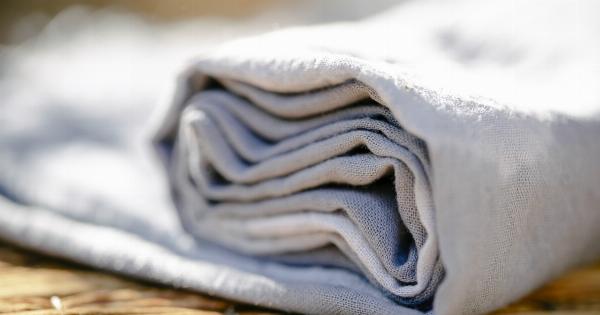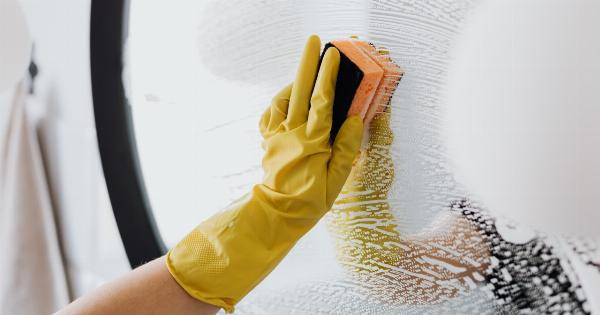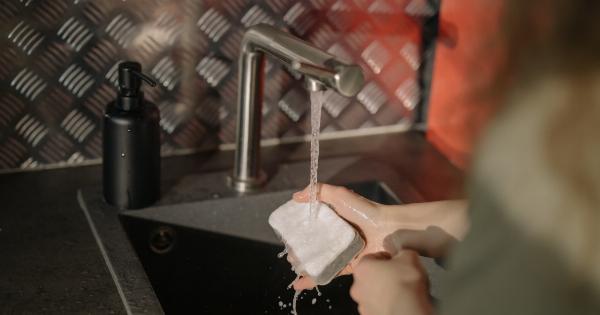Foul smells can linger on fabrics for days, weeks, or even months. They can cause discomfort, embarrassment, and even health problems.
Identifying which types of fabrics hold onto odors the most can help you make better choices when it comes to clothing, linens, and other textiles.
1. Synthetic Fabrics
Synthetic fabrics like polyester, nylon, spandex, and rayon are notorious for trapping odors. That’s because they are made from petroleum-based chemicals that do not breathe or absorb moisture well.
They tend to repel water and oils, which can make sweat and body odor stick to the surface.
These fabrics are also very durable and easy to care for. They can withstand multiple washings and dryings without losing their shape or color. However, they do require special attention when it comes to odor removal.
If you have synthetic clothing or linens that smell bad, here are some tips:.
- Wash them in hot water with a strong detergent. Use the heavy-duty cycle if necessary. Hot water helps to break down the oils and bacteria that cause odors.
- Add a cup of white vinegar to the rinse cycle. Vinegar can help to neutralize odors and soften fabrics. It also helps to remove any detergent residue that might trap odors.
- Avoid using fabric softeners or dryer sheets. These products can leave a coating on synthetic fabrics that can trap odors and make them worse.
- Dry the fabrics on a high heat setting. This helps to kill any bacteria or fungi that might be causing the odor. However, be careful not to over-dry them, as this can damage the fibers.
2. Wool Fabrics
Wool fabrics like cashmere, merino, and alpaca are known for their warmth and softness, but they can also harbor strong odors. This is because wool contains natural oils that can hold onto sweat, dirt, and bacteria.
Additionally, wool is a thick and dense fabric that does not breathe well. This can make it difficult for odors to escape, especially when the fabric is worn close to the skin.
If you have wool clothing or linens that smell bad, here are some tips:.
- Avoid washing wool too often, as it can damage the fibers and cause shrinkage. Instead, air out woolen items between wears to allow them to breathe and dry out.
- If you do need to wash wool, use a gentle detergent that is specially formulated for wool. Hand-washing is usually best, as it allows you to control the temperature and agitation more easily.
- Add a few drops of essential oil to the rinse water. Lavender, tea tree, and eucalyptus oils are all known for their antibacterial and deodorizing properties.
- Dry woolen items flat on a towel, away from direct heat or sunlight. This helps to prevent shrinkage and damage to the fibers.
3. Cotton Fabrics
Cotton fabrics like t-shirts, jeans, and bedding are popular for their affordability, comfort, and breathability.
However, they can also trap odors, especially if they are not washed regularly or if they come into contact with sweat or other body fluids.
Cotton is a natural fiber that absorbs moisture well, but it can also hold onto bacteria and fungi that cause bad smells. Additionally, cotton can be prone to mildew if it is not dried properly.
If you have cotton clothing or linens that smell bad, here are some tips:.
- Wash cotton items in hot water with a strong detergent. Use the heavy-duty cycle if necessary. Hot water helps to kill bacteria and fungi that cause odors.
- Add a cup of baking soda to the wash cycle. Baking soda has natural deodorizing properties and can help to neutralize odors.
- Dry cotton items on a high heat setting. This helps to kill any remaining bacteria or fungi. If you use a dryer sheet, choose one that is unscented to avoid adding more fragrance to the fabric.
- If your cotton items still smell bad after washing, try hanging them outside in the sun and fresh air for several hours. The UV rays and natural ventilation can help to dissipate odors.
4. Silk Fabrics
Silk fabrics like blouses, dresses, and scarves are luxurious and delicate, but they can also be tricky when it comes to odor removal. Silk is a natural protein fiber that is very sensitive to heat, moisture, and chemicals.
Silk should never be washed in hot water or dried in a hot dryer, as this can damage the fibers and cause shrinkage. Additionally, silk should not be exposed to harsh detergents, bleach, or fabric softeners.
If you have silk clothing or linens that smell bad, here are some tips:.
- Spot clean silk items with a mixture of cool water and mild detergent. Use a soft cloth or sponge and gently blot the affected area. Do not rub or scrub, as this can damage the fabric.
- If washing silk is necessary, use a gentle detergent that is specially formulated for silk. Wash the item by hand or on a delicate cycle, using cool water and gentle agitation.
- Avoid wringing or twisting silk items, as this can cause creases and damage to the fibers. Instead, gently squeeze out the excess water and roll the item in a towel to remove more moisture.
- Dry silk items flat on a towel, away from direct sunlight or heat. Avoid using a hanger, as this can cause the item to stretch or sag.
5. Leather Fabrics
Leather fabrics like jackets, boots, and purses can also hold onto odors. Leather is a porous material that absorbs moisture and oils from the skin and surrounding environment.
Additionally, leather can be difficult to clean and deodorize, as it requires special products and techniques.
If you have leather items that smell bad, here are some tips:.
- Wipe down the leather with a damp, soft cloth to remove any surface dirt or oils. Avoid using soap or chemical cleaners, as these can damage the leather.
- Place the leather item in a well-ventilated area and avoid storing it in a damp or humid place. Leather needs air circulation to prevent mold and mildew growth.
- If the odor persists, try using an odor absorber like activated charcoal or baking soda. Place the absorber in a breathable bag and leave it in the same space as the leather item for several days. This can help to neutralize the odor without harming the leather.
- For tough odors, consider taking the leather item to a professional cleaner or restorer. They can use specialized products and techniques to remove the odor and restore the leather’s appearance.
Conclusion
While all fabrics can hold onto odors to some extent, certain types are more prone to it than others. Synthetic fabrics, wool fabrics, cotton fabrics, silk fabrics, and leather fabrics all have their unique cleaning and deodorizing challenges.
By following the tips and techniques outlined above, you can remove odors from your favorite clothing, linens, and textiles, and enjoy fresh, clean-smelling fabrics once again.































